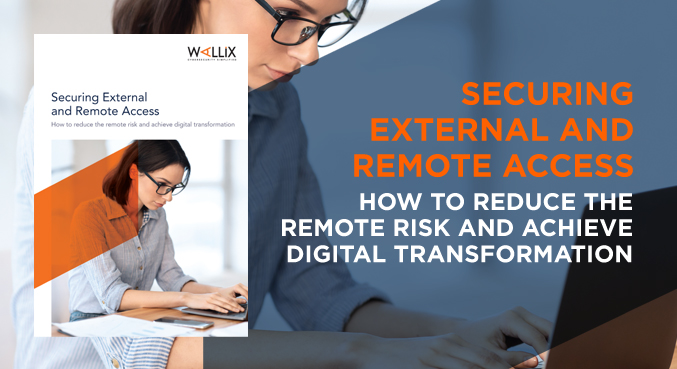Securing Remote Access with Privileged Access Management
The digital transformation had already brought remote access into focus for many businesses – and then the events of 2020 kicked that need into overdrive. By May 2020, it was estimated that as many as half of all employed Americans were working from home. More people than ever now need access to corporate data from their homes and personal devices. And they expect it to work just as well as it does in the office.
There’s never been a higher demand for remote access, and therefore never a greater need for strong access security in the form of Privileged Access Management (PAM).
Remote Access Risks
Remote access and cloud-based applications bring clear benefits to the worker when it comes to increased flexibility, and there are savings to be made for businesses too. Some businesses may have had little need for remote access in the past, so will have been scrambling to put frameworks in place over the past few months. Others will have had external access structures in place for some time – but may have needed to scale up to meet demand.
However, remote workers carry risks that traditional office-based workers don’t. They have local admin rights over their personal devices, meaning they can freely download shadow IT not supported by an organization’s IT department. They’re also more likely to need access to cloud-based apps, which need additional security controls. BYOD (bring your own devices) are more open to risk – even if this is inadvertent from the user’s perspective. Users can unintentionally put networks at risk through:
- Bad password hygiene
- Downloading unsanctioned apps
- Unsafely sharing data via collaborative tools
Even when time is of the essence, security needs to remain a key consideration. With more people and more devices accessing corporate networks, IT teams are defending a broader and more diverse attack surface than ever before. As a result, hackers have been taking full advantage. This means businesses need to start carefully considering how they enable external access.
Securing VPN Access
VPNs are still the most common way to create a ‘data tunnel’ between corporate networks and their users. While data can be protected through encryption, VPNs still carry inherent risks and drawbacks. They can work well enough for internal employees, where IT teams have defined identities and roles for everybody accessing a system. However, this can become problematic when they need to open up access to 3rd party vendors.
Identity and Access Management (IAM) can add an extra layer of protection in case a password for a VPN is compromised. For example, by making a vendor authenticate themselves via multi-factor authentication (MFA). However, even that does not go far enough. IAM alone can’t give the degree of granular control needed to monitor and restrict where a vendor can go or what they can do within a network. For this, organizations need PAM.
Privileged Access Management
IAM identifies and authenticates individual users, whereas PAM focuses on privileged users who can access core applications and systems. In other words, the accounts capable of inflicting serious damage to a corporate network if compromised. Privileged users are often a hacker’s gateway to the most valuable assets and at the heart of major breaches – so they need additional scrutiny.
PAM solutions enforce the Principle of Least Privilege by ensuring users only have access to the specific resources they need to do their job. This offers several advantages over using a VPN alone:
- Full control over advanced users
- Real-time detection of threats and suspicious activity within sessions
- IT teams can modify and grant access credentials centrally
- Prevention of the misuse of software and hardware by limiting credentials and rotating SSH keys
- Analytics to detect vulnerabilities through context analysis and pattern identification
Best-in-class PAM solutions such as WALLIX’s Bastion have password managers, which avoid the risk of password sharing between remote workers. The password manager takes the element of human error out of the equation by creating complex passwords and rotating them automatically, then relying on proxies to connect systems. This is especially important when around 50% of people admit to sharing passwords with colleagues to access business accounts.
Endpoint Privilege Management (EPM)
A robust PAM solution can be joined with EPM to secure external access even further. EPM employs the zero-trust model and makes the assumption that any system could be infiltrated. It deploys internal protections to ensure that the system cannot be harmed by infiltration from outside the corporate network.
EPM solutions like WALLIX’s BestSafe enforce the Principle of Least Privilege at the process and application level, not just the user level. For businesses protected by EPM solutions, defense is carried out at a more granular level for deeper, more tailored control and security. This ensures that software won’t be able to harm the system should a hacker find a way in and try to run malware from the endpoint.
A robust access security framework comprised of PAM and EPM offers organizations the best way to secure external and remote access.
Conclusion
Remote access is no longer a ‘nice-to-have’ – it’s a necessity. However, businesses cannot afford to rush ahead and leave security as an afterthought. Hackers won’t stop searching for the cracks in businesses’ armor, so there’s never been a better time to invest in strong access security.
Find out more about the landscape of external access and how PAM and EPM can protect your business: download our whitepaper ‘Securing External and Remote Access’ now.



